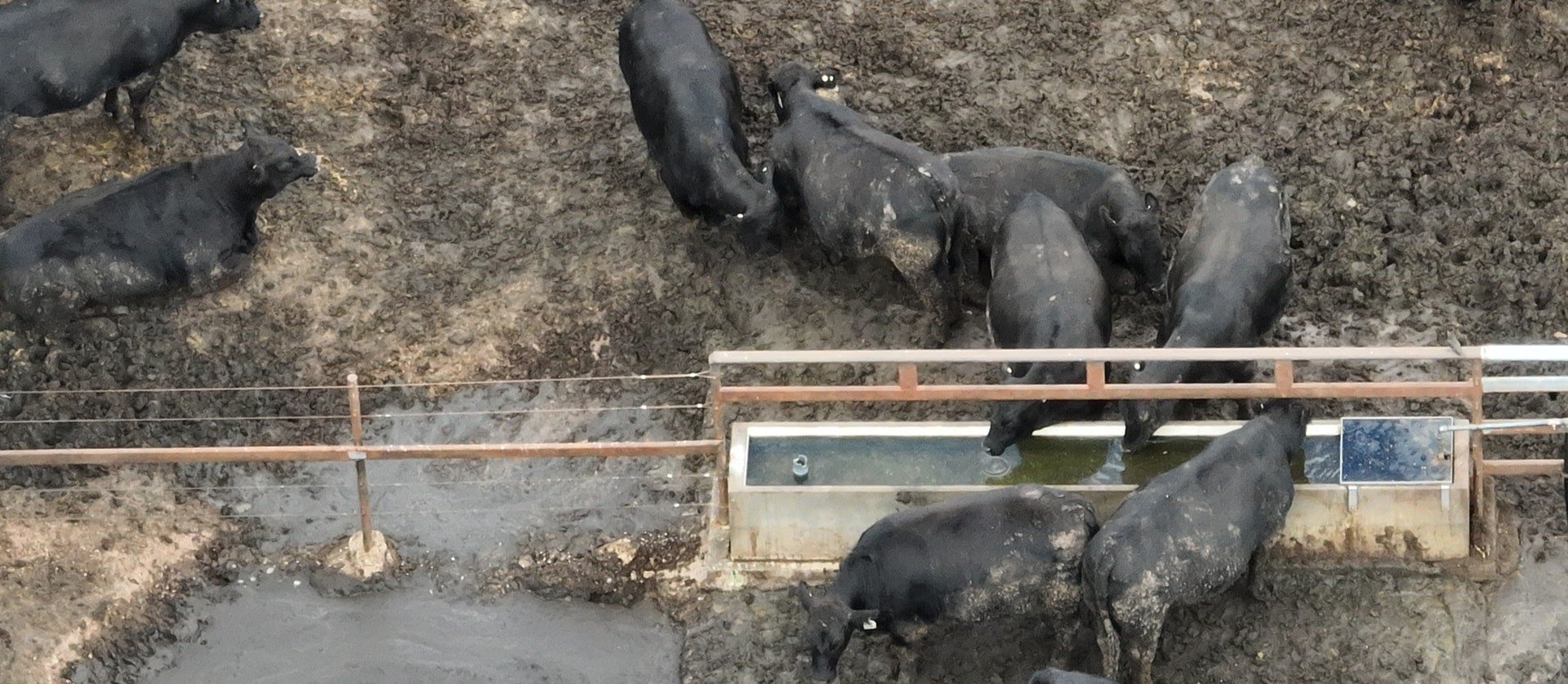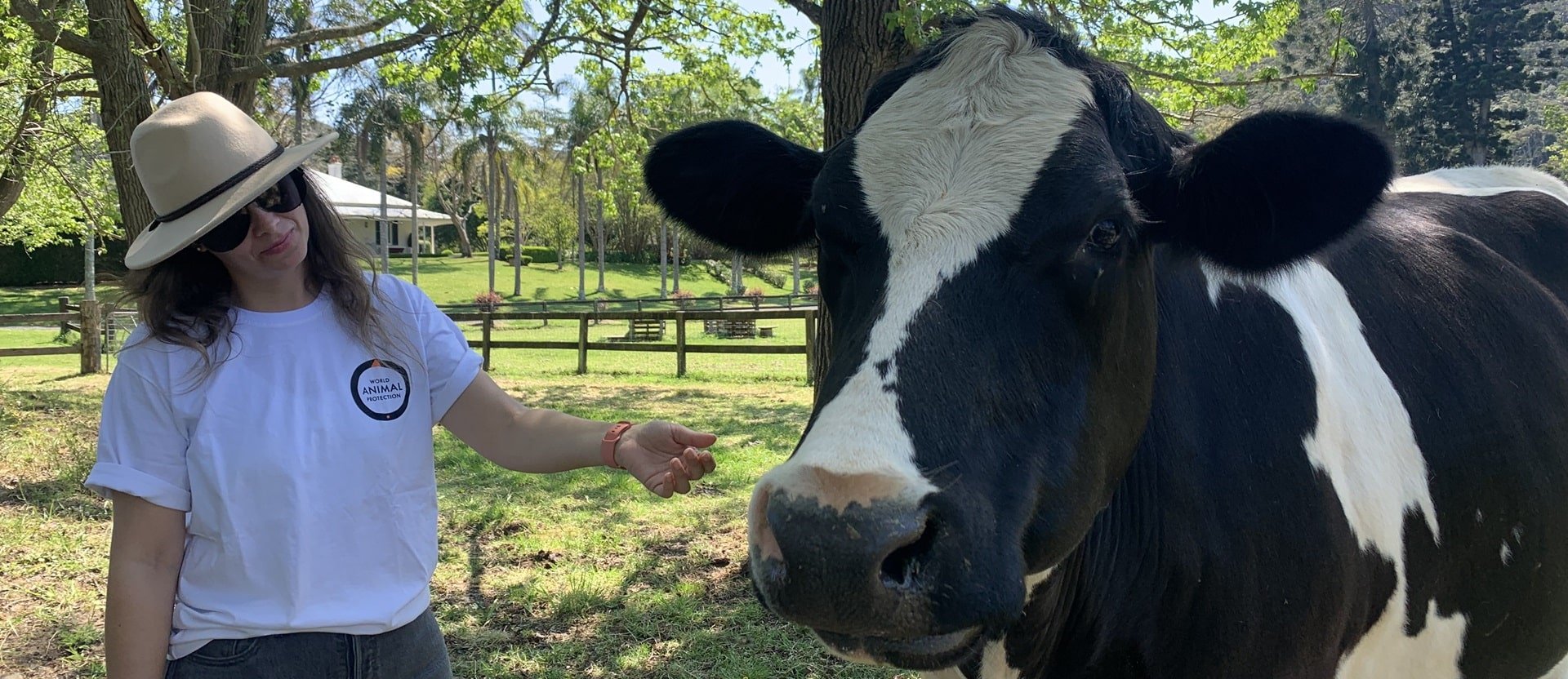Your guide to beef cattle feedlots in Australia
Everything you need to know about feedlots in Australia, beef labels, and more.

Image credit: AnimalKIND / World Animal Protection
World Animal Protection has seen cows on Aussie feedlots confined in barren pens with limited shade and filthy conditions, lying for hours in thick mud and their own waste. Our recent investigation shows that Aussie feedlots are rife with welfare issues.
Many Aussies assume their meat comes from green paddocks. But our latest investigation reveals a very different reality.

Research reveals McDonald’s sources some of their beef from intensive Australian feedlots as part of its supply chain. On these feedlots, evidence shows cows are confined in barren pens, many times with limited shade and cleanliness.
Our research shows JBS Australia, who operates large-scale feedlots, is one of McDonald's beef suppliers. Every year, JBS mega-feedlots confine tens of thousands of cattle in Australia into barren, filthy conditions. In many feedlots, cows are not provided with enough shade to escape the scorching heat or freezing cold, and due to the cramped conditions, are often left standing in their own waste. Cows here can be exposed to crippling infections and disease.
McDonald’s operates more than 43,000 restaurants globally. According to industry sources, Australian beef – some of which is sourced from these JBS feedlots – is supplied to approximately 65-70% of McDonald's stores worldwide.
This is one of Australia’s worst animal welfare crises that most people have never heard of – and it’s being perpetuated by companies like McDonald’s who source some of their beef products from Australian feedlots.
Watch this video to get a glimpse into a few of the many feedlots in Australia owned by JBS - one of the companies supplying McDonald’s beef:

Such feedlots are used in the beef industry to minimise costs and maximise profits – all at the expense of the animals involved.
Transition from pasture to feedlot is one of the most stressful experiences of a cow’s life. Young cows are taken from their home and put on crowded trucks for a long journey to the feedlot, where these sensitive animals then experience significant changes to their surroundings and their diet.
Feedlots are not legally required to provide cows with shade, bedding or enrichment. They are barren, bleak and exposed to the elements. Some cows experience such a diminished quality of life on feedlots that they die before they even get to the slaughterhouse.
JBS Australia operates large-scale feedlots that confine tens of thousands of cattle to barren yards every year. Evidence shows JBS is one of McDonald's beef suppliers.
Everything you need to know about feedlots in Australia, beef labels, and more.

This is an animal welfare crisis in the beef industry. Evidence shows McDonald's sources some of its beef from Australian feedlots as part of its supply chain.
As one of Australia’s major beef purchasers, the fast-food giant has the power to improve animal welfare standards across their supply chain.
Together, we can call on McDonald’s to go feedlot-free.
Disclaimer: information is based on publicly available sources including McDonald's own statements, industry publications, and government records.
Wondering where McDonald’s gets their beef from? Learn more.
Disclaimer: Throughout this campaign we use the term “cows” to refer to cattle. We note that the beef industry often used a wider variety of specific terminology.